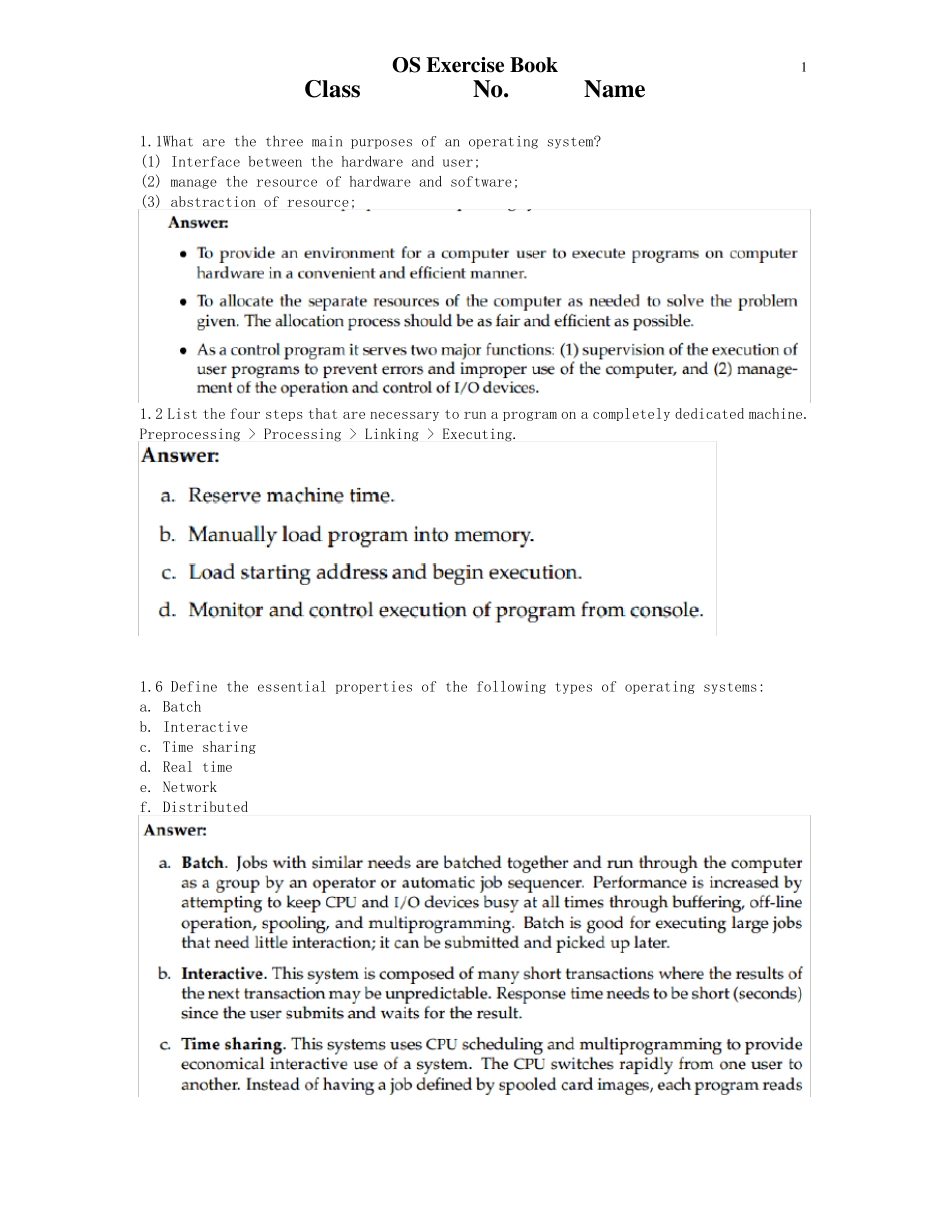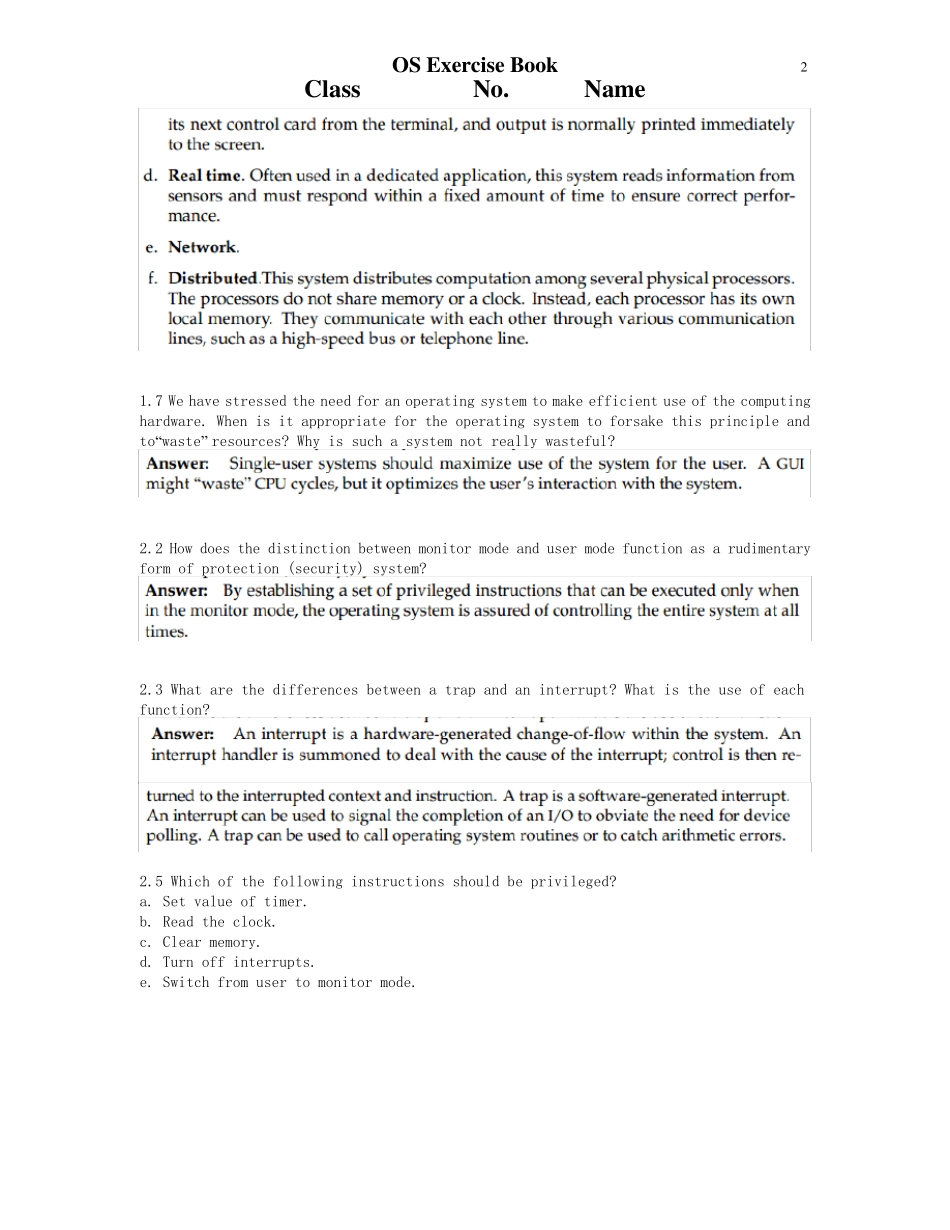OS Exercise Book Class No. Name 1 1.1What are the three main purposes of an operating system? (1) Interface between the hardware and user; (2) manage the resource of hardware and software; (3) abstraction of resource; 1.2 List the four steps that are necessary to run a program on a completely dedicated machine. Preprocessing > Processing > Linking > Executing. 1.6 Define the essential properties of the following types of operating systems: a. Batch b. Interactive c. Time sharing d. Real time e. Network f. Distributed OS Exercise Book Class No. Name 2 1.7 We have stressed the need for an operating system to make efficient use of the computing hardware. When is it appropriate for the operating system to forsake this principle and to“waste” resources? Why is such a system not really wasteful? 2.2 How does the distinction between monitor mode and user mode function as a rudimentary form of protection (security) system? 2.3 What are the differences between a trap and an interrupt? What is the use of each function? 2.5 Which of the following instructions should be privileged? a. Set value of timer. b. Read the clock. c. Clear memory. d. Turn off interrupts. e. Switch from user to monitor mode. OS Exercise Book Class No. Name 3 2.8 Protecting the operating system is crucial to ensuring that the computer system operates correctly. Provision of this protection is the reason behind dual-mode operation, memory protection, and the timer. To allow maximum flexibility, however, we would also like to place minimal constraints on the user. The following is a list of operations that are normally protected. What is the minimal set of instructions that must be protected? a. Change to user mode. b. Ch...


